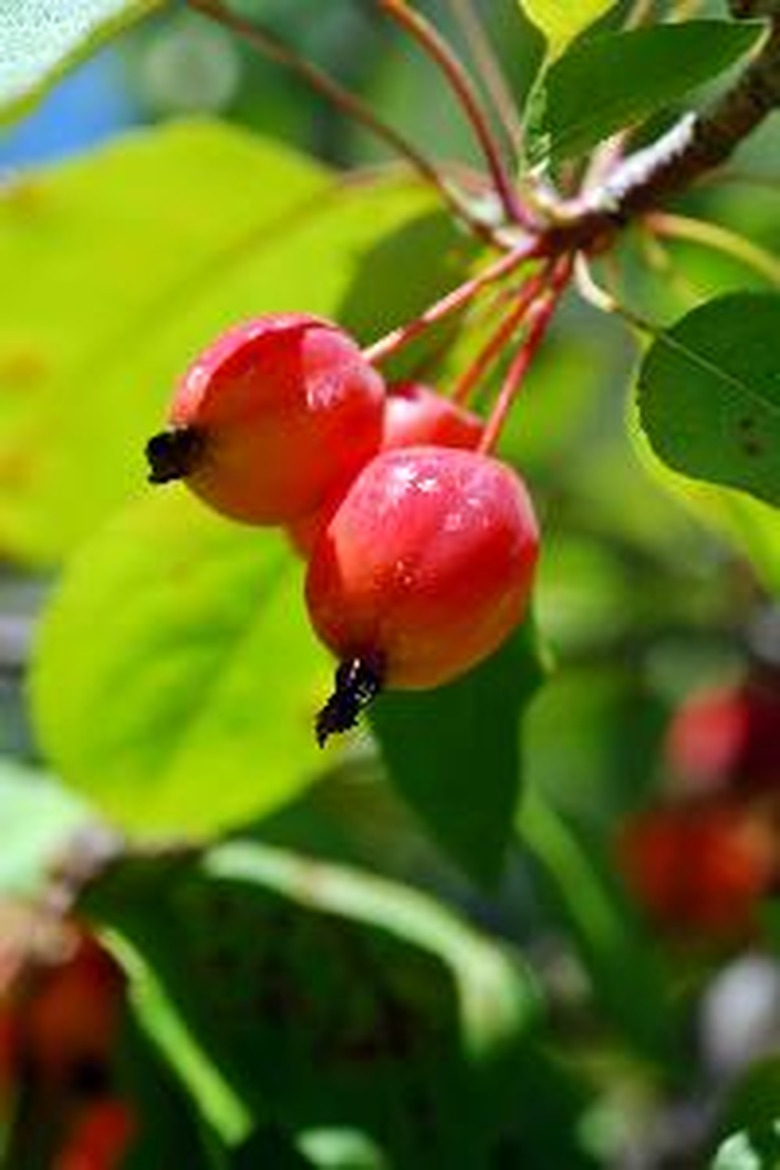Thunderchild Crabapple Trees
Thunderchild crabapple (Malus 'Thunderchild') is a flowering crabapple tree that boasts a compact, dense habit. The tree is ideal as a specimen plant in a small urban garden or as a containerized patio or deck plant. The tree can also be grown as a bonsai.
Thunderchild crabapple (Malus 'Thunderchild') is a flowering crabapple tree that boasts a compact, dense habit. The tree is ideal as a specimen plant in a small urban garden or as a containerized patio or deck plant. The tree can also be grown as a bonsai. Thunderchild is resistant to fireblight, a common ornamental crabapple disease.
Appearance
Thunderchild grows to be between 15 and 20 feet tall, with a mature spread of between 12 and 15 feet. The tree is characterized by upright, spreading branches and bright green leaves which gradually turn dark purple in the fall. The tree blooms in spring with pink flowers that give way to dark, purplish red fruits which are about 1/2 inch in length. Fruits remain on the tree well into winter, after the leaves have dropped.
- Thunderchild crabapple (Malus 'Thunderchild') is a flowering crabapple tree that boasts a compact, dense habit.
Location
Thunderchild is a suitable tree for a bright, sunny location in USDA zones 3 to 7. The tree has some tolerance of shade, although flowering and fruiting may be reduced. Thunderchild's dense, compact habit makes it suitable for urban environments and the tree can often be grown under power lines without any problems. Prune in order to shape the tree and increase air circulation. Avoid planting close to sidewalks, as fruit drop may become a nuisance.
Care
Thunderchild crabapple is tolerant of a range of conditions, though it prefers a well-draining, slightly acidic soil. Soil pH should be between 5.5 and 7. The tree is moderately drought tolerant, though it dislikes the salty soil and air found in coastal areas. Water regularly, especially during the growing season. Prune suckers, the new shoots that appear below the graft union, and awkward, dead or diseased branches. Fertilize as needed.
- Thunderchild is a suitable tree for a bright, sunny location in USDA zones 3 to 7.
- The tree has some tolerance of shade, although flowering and fruiting may be reduced.
Problems
Thunderchild crabapple has good resistance against fireblight and scab, though it may experience problems with fungal disease such as powdery mildew. Avoid watering from overhead, as wet foliage is more likely to attract fungus. Aphids and scale are two sucking pests that cause damage. Aphids are often easily treated with insecticide or predatory insects such as ladybugs. Scale can be removed by applying a horticultural oil such as neem oil to infested areas.
